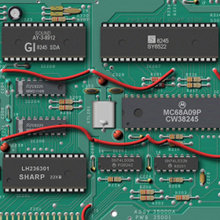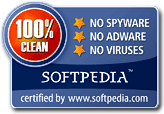One more defect added !
The happy few having the chance to own a real system will know what I'm talking about. This buzz noise is a very typical sound pattern produced by the machine when it is operating. It is caused by a design flaw (the sound line lies too close from the board, and gets plagued by interferences due to its nearby activity).
Well, the very first implementation is now completed, and it is quite straightforward at the moment (a mere noise sample looping). The buzz sound can be turned on/off (independently of the vectrex "normal" sound), and its volume can also be adjusted independently.
Below is a small video whose goal is to let you enjoy the audio result - the framerate is capped 10 FPS, so don't really expect a smooth video ;-)
As you can hear, the result is quite acceptable already. However, a more interesting implementation would be to dynamically modulate the PCM wave, depending on the current program activity. This would require quite a lot of investigations on a real vectrex, in order to define which hardware parameters are significant, and how they can be integrated into the final noise generation algorithm.
I'm not sure I can bide enough time to tackle this task ; still, this is very tantalizing...














